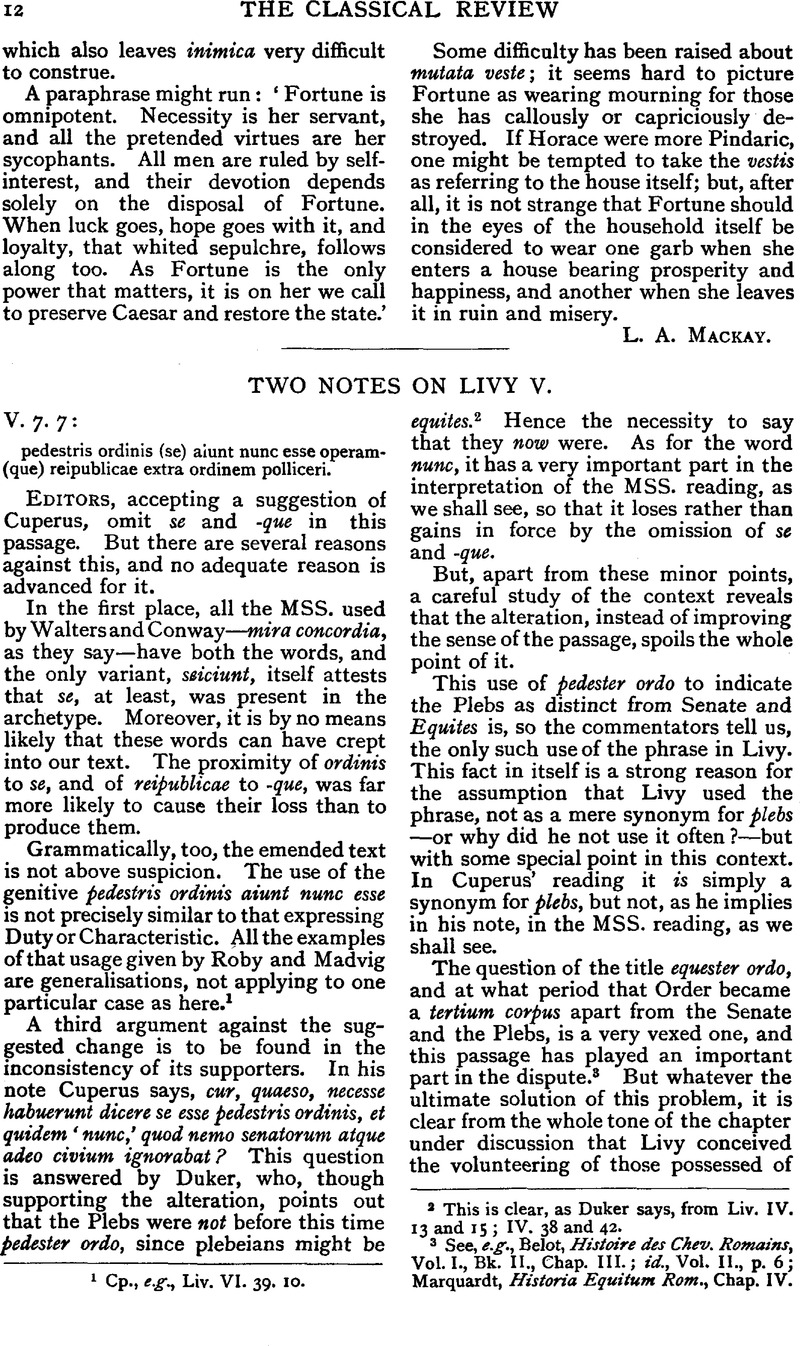No CrossRef data available.
Article contents
Abstract

- Type
- Review Article
- Information
- Copyright
- Copyright © The Classical Association 1929
References
page 12 note 1 Cp., e.g., Liv. VI. 39. 10.
page 12 note 2 This is clear, as Duker says, from Liv. IV. 13 and 15; IV. 38 and 42.
page 12 note 3 See, e.g., Belot, Histoire des Chev. Romains, Vol. I., Bk. II., Chap. III.; id., Vol. II., p. 6; Marquardt, Historia Equitum Rom., Chap. IV.
page 13 note 1 See p. 12, n. 2.
page 13 note 2 E.g., § 8, non enim (plebs), sicut equites—laudari iussi; § 10, laudare equites, laudare plebem.
page 13 note 3 Cp. in Bk. V. 23. 4 the use of omnes ordines, implying that there were more than two.
page 13 note 4 See Chap. XIII. 3.
page 14 note 1 See Oxford text ad loc.
page 14 note 2 See Smith's Dictionary of Biography, s.v. ‘Maelia Gens.’ It is worthy of notice here that the cognomen Capitolinus is no support for the reading Q. Manlium, since the Manlii did not obtain the title until 390 B.C. (Liv. V. 31. 2).
page 14 note 3 See n. 5 on this page.
page 14 note 4 See Chap. XXIV. 1.
page 14 note 5 This is a further ground for reading Maelium for Maenium, since Livy calls Maelius a patrician in Chap. XII. 10. Smith's Dictionary of Biography, s.v., says that the Maelii were plebeian.
page 15 note 1 See p. 14, n. 2 and Oxford text ad loc.
page 15 note 2 See Oxford text of Livy, Bks. VI.–X., Introd., p. xv seq.
page 15 note 3 Incidentally, it is possible that this similarity of ending is responsible for the reading Maenium for Maelium, the two endings Maelium and Manlium being telescoped by the scribe.


